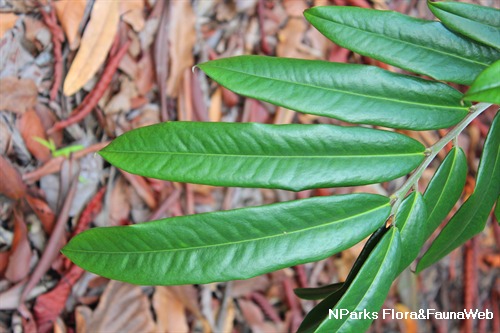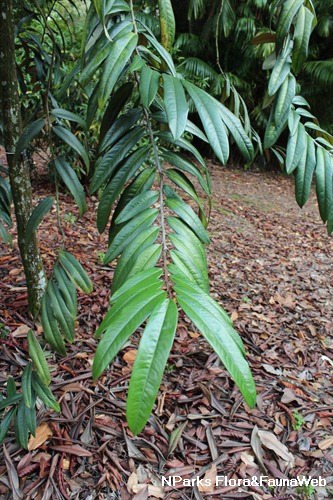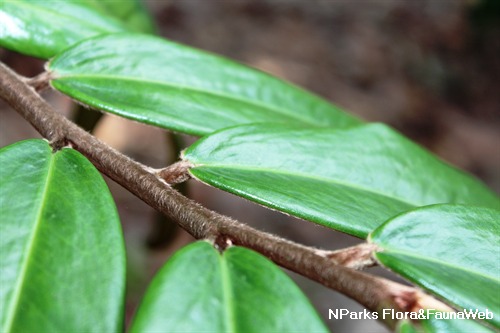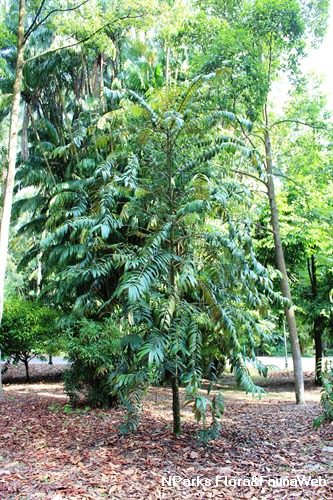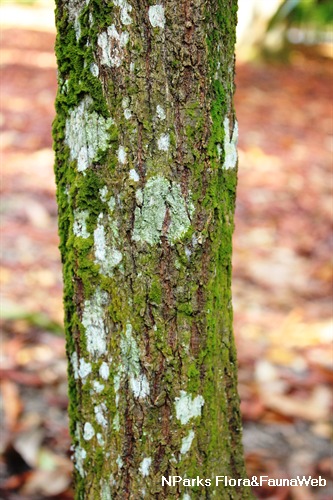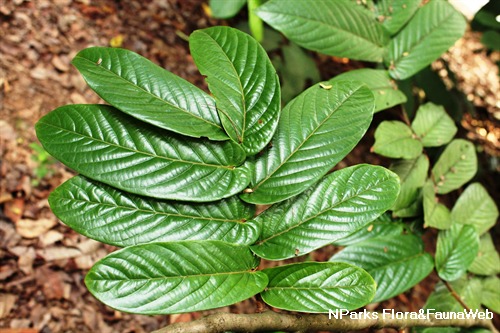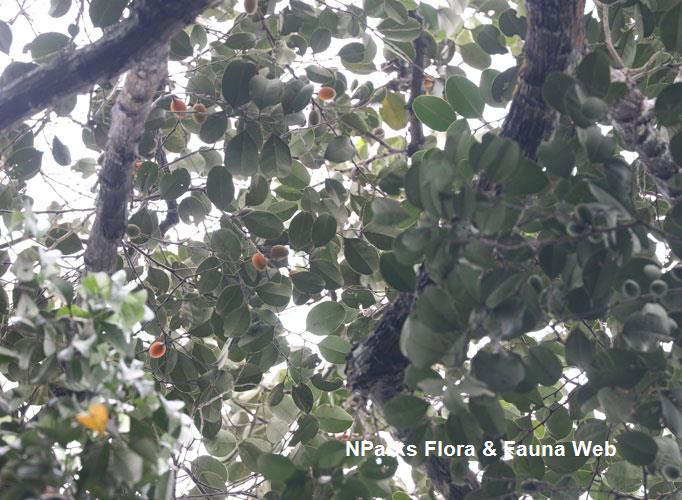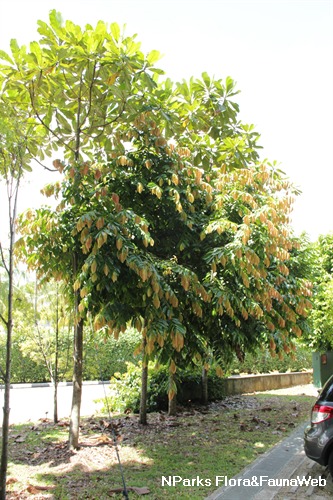
Name
Classifications and Characteristics
| Plant Division | Angiosperms (Flowering Seed Plants) (Dicotyledon) |
|---|---|
| Plant Growth Form | Tree |
| Lifespan (in Singapore) | Perennial |
| Mode of Nutrition | Autotrophic |
Biogeography
| Native Distribution | Peninsular Malaysia, Sarawak, Singapore |
|---|---|
| Native Habitat | Terrestrial |
| Preferred Climate Zone | Tropical |
| Local Conservation Status | Native to Singapore (Critically Endangered (CR)) |
Description and Ethnobotany
| Growth Form | A tree. |
|---|---|
| Foliage | Leaves are oblong, measuring about 20 cm long and 7 cm wide, arranged alternately. Leaf adaxial side (upper surface) is dark green and glabrous (no hair), while the abaxial side (lower surface) is brownish-green, covered with copper-colored hairs. |
| Stems | Stems are covered with hairs. |
| Fruit | Fruits are elliptical and brown colored, covered with short hairs. |
| Habitat | Primary lowland and hill forests. |
| Etymology | Diospyros is derived from two Greek words, dios (divine) and pyros (wheat), meaning divine wheat (fruit). |
| Ethnobotanical Uses | Medicinal: Leaves are burned to repel flies. The pounded roots are used in the treatment of herpes. |
Landscaping Features
| Desirable Plant Features | Ornamental Foliage, Ornamental Fruits, Ornamental Form |
|---|---|
| Landscape Uses | Parks & Gardens |
Fauna, Pollination and Dispersal
| Pollination Method(s) | Biotic (Fauna) |
|---|---|
| Seed or Spore Dispersal | Biotic (Fauna) |
Plant Care and Propagation
| Light Preference | Full Sun |
|---|---|
| Water Preference | Moderate Water |
| Plant Growth Rate | Moderate |
| Rootzone Tolerance | Moist Soils, Well-Drained Soils, Fertile Loamy Soils |
| Propagation Method | Seed |
Foliar
| Foliage Retention | Evergreen |
|---|---|
| Mature Foliage Colour(s) | Green |
| Mature Foliage Texture(s) | Leathery |
| Foliar Type | Simple / Unifoliate |
Fruit, Seed and Spore
| Mature Fruit Colour(s) | Brown |
|---|---|
| Mature Fruit Texture(s) | Hairy / Hirsute |
Image Repository
Others
| Master ID | 29627 |
|---|---|
| Species ID | 3936 |
| Flora Disclaimer | The information in this website has been compiled from reliable sources, such as reference works on medicinal plants. It is not a substitute for medical advice or treatment and NParks does not purport to provide any medical advice. Readers should always consult his/her physician before using or consuming a plant for medicinal purposes. |

